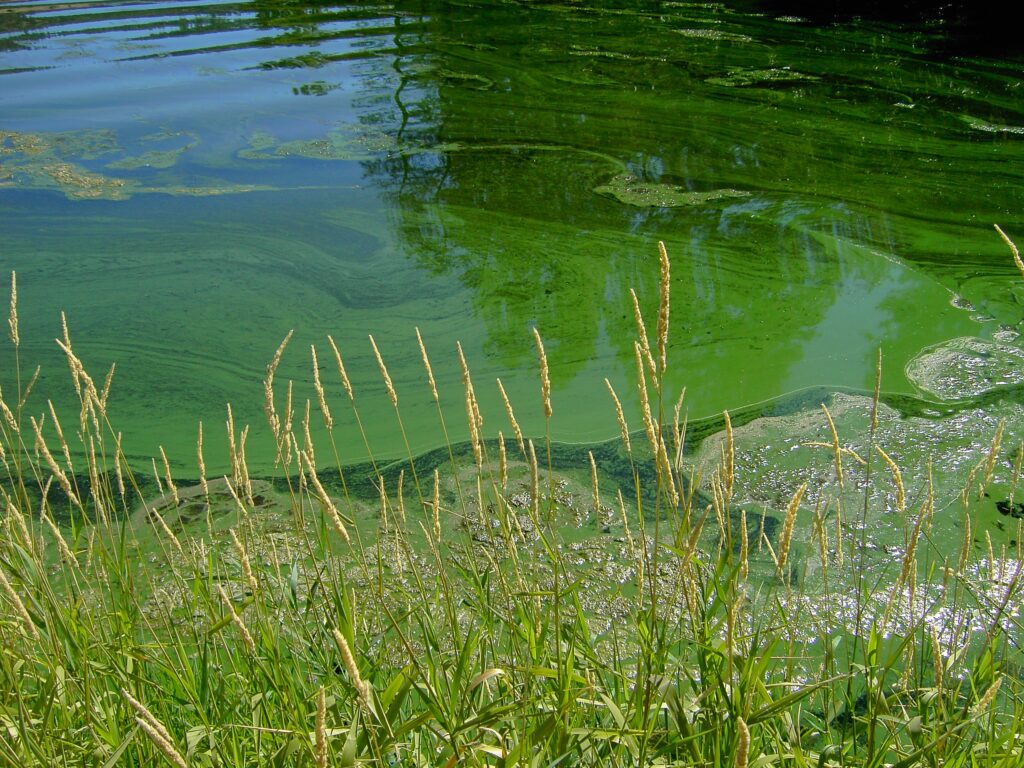Cyanobacteria blooms occur when blue-green algae rapidly grows out of control. (Courtesy of Lorraine Backer/Centers for Disease Control and Prevention public health image library)
The Idaho Department of Health and Welfare has issued a health advisory for the west side of Henry’s Lake near eastern Idaho’s Island Park, urging caution when recreating in or near the water.
Recent samples from the Henry’s Lake showed high amounts of toxin-producing cyanobacteria, which can cause harmful algal blooms in the water. The toxins they produce — called cyanotoxins— can be harmful to people, pets and livestock.
When recreating near or in the west side of Henry’s Lake, Health and Welfare said in a press release that Idahoans should take the following precautions while the advisory is in effect:
Avoid swimming, wading or other contact with the water. Take extra care to ensure children do not drink or get the water on them.
Ensure pets and livestock do not drink or go into the water. If they have contact with the water, clean skin, hide or fur with clean water right away.
Do not drink or cook with the water. Boiling or filtering the water does not remove the toxins and can increase the risk of becoming sick.
Wash hands thoroughly in clean water after handling fish or objects from the water.
If you choose to eat fish from the water, clean and wash fish thoroughly in uncontaminated water. Fillet the fish, and remove all fat, skin and internal organs before cooking. Cyanotoxins can build up in fish, and the risk to people is unknown.
Watch for symptoms. If you touch or swim in the water or breathe in water droplets, you might experience a rash, hives, red eyes, wheezing, coughing, or shortness of breath. If you swallow the water, you might have stomach pain, diarrhea or vomiting. You might have a headache, muscle weakness or dizziness. If your liver is damaged, your skin might turn yellow, and you will have dark urine. If you think you might be sick from cyanotoxin, consult your health care provider or call the poison center at 800-222-1222. Notify algae@deq.idaho.gov.
Monitor media reports and Health and Welfare’s website for health advisories.
Cyanobacteria are a natural part of Idaho’s water bodies, but when temperatures rise, their populations can bloom and toxic chemical compounds can be released into the water, the press release said. Blooms don’t all look the same. They may look like mats, foam, spilled paint or surface scum and have a foul odor, according to Health and Welfare.
Mats can be out of sight on the bottom of the water body. Pets, livestock and wildlife can get sick or die, within minutes to days after cyanotoxin exposure.
Dogs may become sick first because they are more likely to swim in or drink contaminated water or lick contaminated water or bloom material off their fur. If your pets or livestock have been in the water, immediately wash them with clean water to keep them from licking cyanobacteria off their bodies. Health and Welfare urges you to seek veterinary care immediately if your pets or livestock seem sick after going in or drinking the water.
For information about harmful algal blooms, visit DEQ’s website or Health and Welfare’s website. The public will be notified once the advisory is lifted, according to the press release.
GET THE MORNING HEADLINES DELIVERED TO YOUR INBOX

